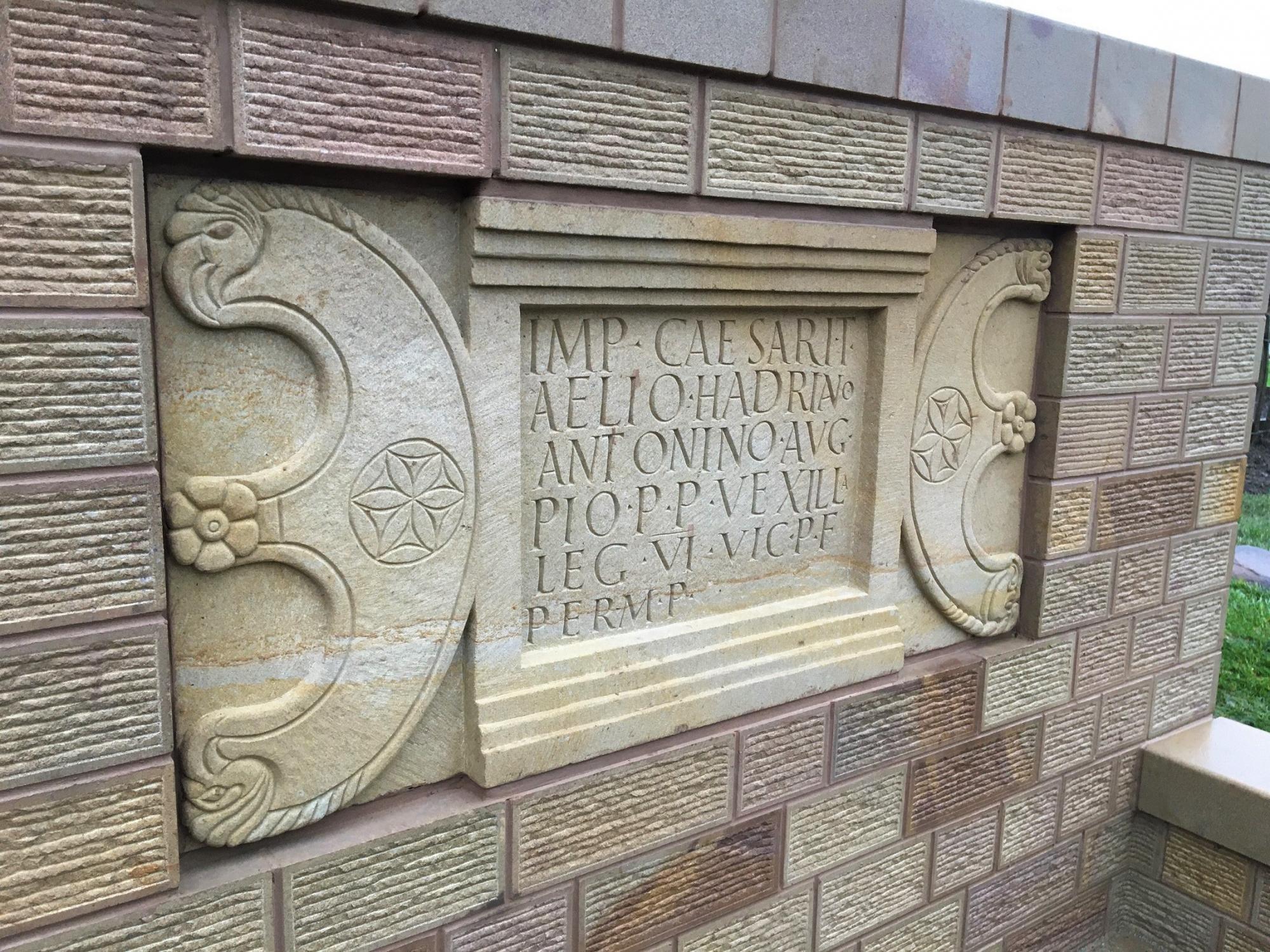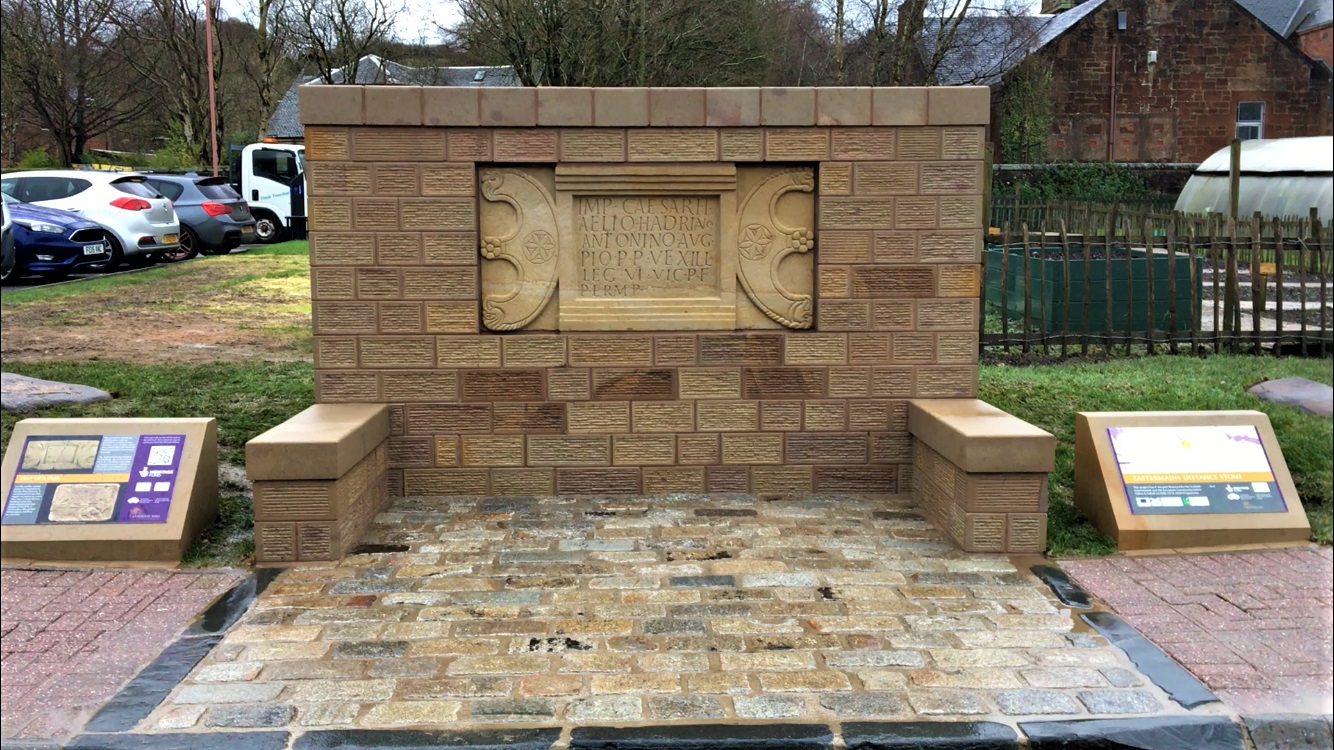A tribute enshrined in stone centuries ago by the Sixth Legion - on the most north-western edge of the Roman Empire - has been recreated in
Twechar.
The Antonine Wall was built by some 7,000 men from three legions - from around 142 AD - and stretched 37 miles, between the Clyde and the Forth.
Each legion was responsible for building sections of the wall and distance stones were created to mark their completion - highly-decorative markers commemorating the legion, recording the distance built and offering a dedication to the Emperor Antoninus Pius.
As part of the Rediscovering the Antonine Wall project, a replica of the historic Eastermains stone - found at Inchbelly Bridge, to the west of Twechar, in 1740 - has been installed in the grounds of Twechar Healthy Living & Enterprise Centre, near the line of the wall. There are also interpretation plaques to illuminate its history.
It is the first in a series of five such markers being recreated as part of the £2.1million project, which aims to create awareness and engagement within communities along the line of the wall - a UNESCO World Heritage Site.
Twechar Healthy Living & Enterprise Centre has worked in partnership with the project and is hosting the stone within its garden, where it will be an attraction for all those using and visiting the centre. The village sits in the shadow of Bar Hill, where an Antonine Wall fort was located in addition to an earlier Iron Age hillfort.
The replica has been created by stonemasons Jo Crossland and Luke Batchelor, and incorporated into a setting designed by Land Use Consultants.
Rediscovering the Antonine Wall is being led by West Dunbartonshire Council, in partnership with East Dunbartonshire, Glasgow City, North Lanarkshire and Falkirk Councils, as well as Historic Environment Scotland (HES). The project runs until October 2022 and has been informed by public consultation.
It also includes a Roman-themed play facility at Peel Park, Kirkintilloch, and a community garden with Bearsden Baptist Church.
Emma McMullen, Antonine Wall HLF Project Manager, said, "We are delighted to unveil the Twechar distance stone - the first of five being created in landscape sites near to the line of the wall, which will create a distance stone trail once completed. Thanks to everyone involved for their incredible efforts."
Patricia Weeks, Antonine Wall World Heritage Site Co-ordinator for HES, said, "Many of the original markers found along the line of the wall are on display in the Hunterian Museum in Glasgow, but this project gives people the chance to see how they might have looked in the landscape all those centuries ago. It's a momentous achievement and will help to bring the past back to life for local communities."
The National Lottery Heritage Fund awarded support to the project, which was match-funded by contributions from each of the partner local authorities and other external sources, including Kelvin Valley & Falkirk LEADER, FCC Communities Foundation (formerly WREN) and more.
The Antonine Wall marked the most north-western point of the Roman Empire and passed through West Dunbartonshire, Glasgow, East Dunbartonshire, North Lanarkshire and Falkirk Council areas.
Councillor Vaughan Moody, East Dunbartonshire's Joint Council Leader, said, "This is a great addition to the area and helps to create a window into the history of the Antonine Wall, inspiring people of all ages to find out more about Scotland's past. I look forward to seeing it for myself when it is safe to do so."
Councillor Andrew Polson, Joint Council Leader, added, "East Dunbartonshire has strong links to the Roman Empire, including Bearsden, Kirkintilloch, Twechar and Bishopbriggs. It's important to look at ways of exploring and maximising local heritage and history - raising awareness and supporting the local economy. Well done to all."
Visit www.antoninewall.org and https://rediscoveringtheantoninewall.org/ for more information.
The Rediscovering the Antonine Wall project includes:
- Roman-themed playparks
- Replica stone distance slabs and specially-designed sculptures, and new ways of enabling people to engage with the sites
- A programme of 30 community projects, including a Scouts Big Roman Camp Out, community murals created by young people, Roman-inspired community gardens and an arboretum
- Volunteers - named the 21st Century Legion - being recruited and trained to help co-design projects in their communities, act as tour guides, help with research and raise awareness.
The Antonine Wall was constructed from around 142 AD by the Romans to mark the north-west frontier of their empire. It was a mighty symbol of their power and authority. Built, occupied and then abandoned by the Romans in the space of 20 years, the wall has left its mark on Scotland’s landscape.
Follow us on Twitter @EDCouncil or like us on Facebook